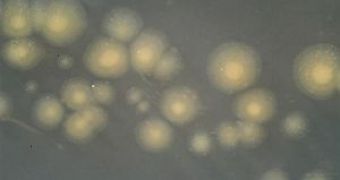Recently, scientists have found that two types of marine planktonic bacteria have a "switch gene" that shifts the bacterial metabolism to convert a sulfur compound, dimethylsulfoniopropionate (DMSP), either in a greenhouse effect gas, dimethlysulfide (DMS) - that rises into the atmosphere - or in sulfur compounds that can be used as nutrients and are climatically inert. "This new gene offers a powerful tool to study the question of how these plankton are involved with sulfur exchange between the ocean and atmosphere," said Mary Ann Moran, marine microbial ecologist at the University of Georgia.
DMS represents much of the sulfur compounds in the atmosphere with oceanic provenience. "Isolating and discovering a novel, keystone bacterium from the ocean first, and then sequencing its genome enabled this team to find the genes involved in the DMSP cycle," said Matthew Kane, program director in the National Science Foundation (NSF) Division of Molecular and Cellular Biosciences. "The research has revealed the previously hidden role that marine microbes play in the global sulfur cycle."
Roseobacter (photo) and SAR11 bacterial strains are those involved in driving DMSP away from forming harmful DMS. The researchers looked into DNA fragments for specific genes implied in sulfur compounds use. "This breakthrough in the microbial physiology of DMSP metabolism opens the door to understanding the biology and ecology of this globally important process," said William Whitman, a microbiologist at the University of Georgia.
This discovery will shed light on understanding how marine plankton is involved in the routing of carbon and sulfur between sea and atmosphere with direct role in global warming.
Photo credit: Harbor Branch Marine Microbial Database

 14 DAY TRIAL //
14 DAY TRIAL //